#Italian automaker
Explore tagged Tumblr posts
Text
Revolutionizing Automotive Excellence: The Birth of Lamborghini

View On WordPress
#Automotive design#Aventador#Exotic cars#High-Speed Beast#Huracán#Iconic sports cars#Italian automaker#Lamborghini doors#Luxury vehicles#Performance engineering#Prestige automobiles#Speed and power#Status Symbol#Supercars#V12 engines
0 notes
Text
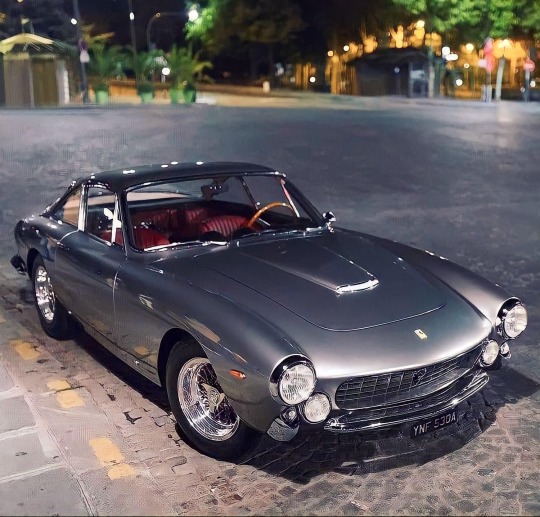
The Ferrari 250 GT Berlinetta Lusso is a GT car which was manufactured by Italian automaker Ferrari from 1962[3] to 1964. Sometimes known as the GTL, GT/L or just Lusso, it is larger and more luxurious[α] than the 250 GT Berlinetta. The 250 GT Lusso, which was not intended to compete in sports car racing, is considered to be one of the most elegant Ferraris.
#ferrari 250#berlinetta#ferrari#250 gt#gt#dream car#exotic car #sportscar#luxury car#supercar#hypercar#classic car#vintage car#muscle car#muscle cars#musclecar#musclecars#classic#aesthetic#aesthetics#vintage
895 notes
·
View notes
Text
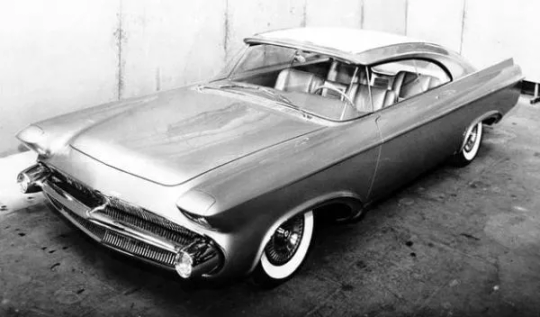
1956 Chrysler Norseman
The Dream Car at the Bottom of the Atlantic: 1956 Chrysler Norseman
Despite its sleek and dramatic styling, this Chrysler show car is remembered mainly for its sad fate: For decades now, it has been sleeping at the bottom of the Atlantic. Here’s the unfortunate story of the 1956 Norseman.
Throughout the 1950s, the Italian coachbuilder Ghia of Turin enjoyed a prolific partnership with Chrysler, creating many of the Motor City automaker’s most memorable show cars. Chrysler provided the designs, chassis, and running gear, while Ghia’s artisans created the hand-crafted bodies, typically at a fraction of the cost and time required in America.
However, there was at least one Chrysler-Ghia collaboration that was never officially shown to the public: the ill-fated 1956 Norseman. On its voyage to Detroit aboard the Andrea Doria, the Italian passenger liner collided with another ship, the Stockholm, and sank around 50 miles off the coast of Nantucket, claiming 51 lives. Since July of 1956, the Norseman has rested in the Andrea Doria’s hold at the bottom of the Atlantic, and a handful of photos are all that remain.
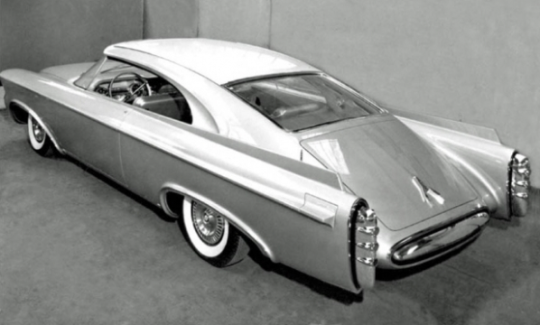
Designed under the supervision of Chrysler styling chief Virgil Exner, the Norseman showcased a number of distinctive features, but arguably the most spectacular was its fully cantilevered roof, reportedly conceived by Chrysler stylist Bill Brownlie. With no A or B pillars, the top was supported entirely by the buttress-like C pillars, aided by a pair of thin steel rods in tension at the forward edge of the panel. Other distinctive touches included hidden headlamps and floating bumpers front and rear.
The Norseman was constructed on a 129-inch wheelbase chassis—the same wheelbase as an Imperial, we note—while a 331 CID hemi V8 provided the power, coupled to a PowerFlite two-speed automatic transmission. According to Chrysler, the idea car, as the automaker called its show car prototypes, represented an investment of 50,000 man-hours and $150,000 to $200,000, while Ghia’s portion of the build consumed $15,000 and took 15 months, it’s said.

This photo of the Norseman’s cockpit, above, also provides a close look at the pillarless roof construction and the elaborate one-piece windscreen supplied by PPG Industries. Four bucket seats upholstered in two-tone metallic leather were separated by broad consoles front and rear, while the front seat backs pivoted to provide easier access for rear passengers.
Since the Norseman went to Davy Jones’ locker before it was ever officially photographed or displayed, very few images exist. (There is even some dispute about the color of the paint.) The few available photos were all taken at Ghia in Turin, including the fascinating shot below of the wooden body buck on which the aluminum body panels were formed. The rare snapshot provides some insight into the tremendous amount of hand labor required. While the Norseman and its unfortunate history are well-remembered today, few if any of its exotic features ever made it to a Chrysler production vehicle.

68 notes
·
View notes
Photo





The Lamborghini Urraco is a 2+2 sports car manufactured by Italian automaker Lamborghini, introduced at the Turin Auto Show in 1970, marketed for model years 1972-1979, and named after a line of Miura-bred fighting bulls; the name translates to "little bull". The car is a 2+2 coupé with body designed by Marcello Gandini, at the time working for Carrozzeria Bertone.
264 notes
·
View notes
Text
Bronze rarity: 1953 Alfa Romeo 1900C Sprint Supergioiello by Ghia
The Alfa Romeo 1900, affectionately known as Millenove, marked a significant milestone for the Italian automaker post-World War II. Production of this model began in Portello in 1950, with its debut at the Paris Motor Show, featuring the latest design by Orazio Satta. The 1900 series succeeded the stunning Alfa 6C but introduced a new inline-four engine with two overhead camshafts and DOHC…

View On WordPress
9 notes
·
View notes
Photo
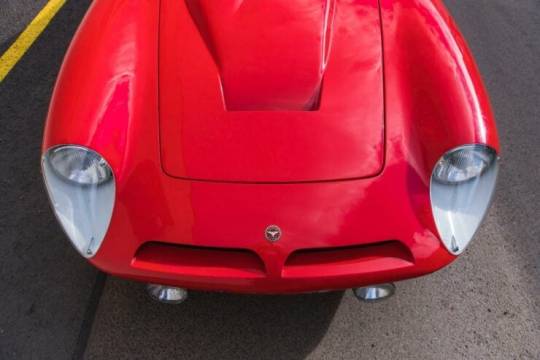
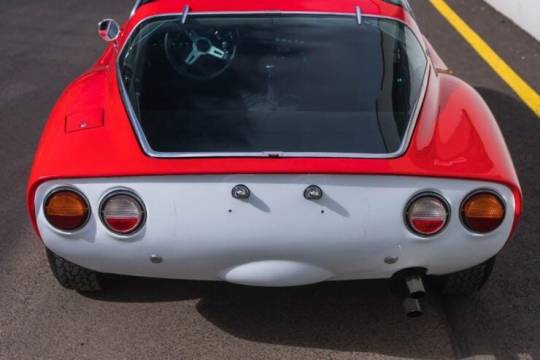


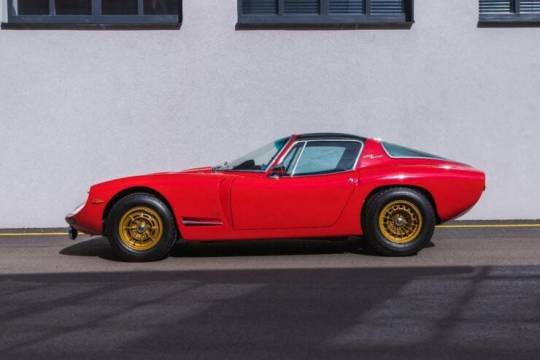


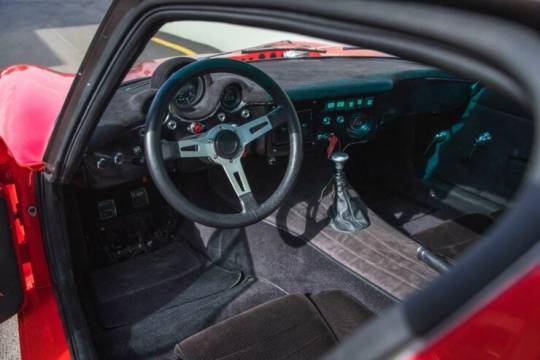


Bizzarrini 1900 GT Europa (1 of 12).
The Bizzarrini 1900 GT Europa is a lightweight sports car that was built by the Italian automaker in the late 1960s in very limited numbers – just 12 were made in total and the car you’re looking here is the last one manufactured before the factory shut down. Giotto Bizzarrini, the mastermind behind the Bizzarrini 1900 GT Europa, was an accomplished engineer and designer. Before starting his own company, he worked for several prestigious Italian automakers, including Alfa Romeo, Ferrari, and Iso Rivolta. The Bizzarrini 1900 GT Europa was a significant milestone for the company, as it was their first affordable production model. It was a smaller, more attainable counterpart to the Bizzarrini 5300 GT Strada. The Europa was powered by a 1.9 liter Opel inline-four cylinder engine, which delivers a respectable 110 horsepower.
With a top speed of 128 mph and a 0-60 time of 10.5 seconds, the Europa offered drivers an exhilarating driving experience thanks in no small part to the impeccable engineering experience of Giotto Bizzarrini. The car was developed with independent front and rear suspension, a front-mid-mounted engine, four wheel disc brakes, a limited slip differential, an integral roll bar, and a well-balanced chassis that was more than a match for its competition in the late 1960s. The 1900 GT Europa’s distinctive design was a collaboration between Giotto Bizzarrini and the talented young Italian designer, Pietro Vanni with ample influence taken from the Bizzarrini 5300 GT. The final body shape was honed in the wind tunnel at Pisa University in order to get it as aerodynamically efficient as possible.
The Europa was notable for its low-slung profile, aggressive lines, and a minimalist cockpit designed with racing in mind. Its distinctive design language captured the essence of Italian sports cars in the 1960s, embodying elegance, performance, and outright speed.
#Bizzarrini 1900 GT Europa#Giotto Bizzarrini#Alfa Romeo#ferrari#Iso Rivolta#Bizzarrini 5300 GT Strada#Pietro Vanni
80 notes
·
View notes
Text

Frikadelli Racing Team plies their N°30 Ferrari 296 GT3 through the dawn breaking over the 2023 ADAC 24H-Rennen Nürburgring towards an impressive victory for the Italian automaker.
#ferrari 296 gt3#24h-rennen nürburgring#frikadelli racing#nordschleife#24 hours of nuerburgring#2023 24hnbr#nürburgring#sp9#night racing#karussell
41 notes
·
View notes
Text

The Pinnacle of Automotive Luxury: Top 10 Luxurious Cars
youtube
In the world of luxury automobiles, where opulence meets innovation, a select few cars stand out not just as modes of transportation, but as symbols of prestige, craftsmanship, and unparalleled performance. Loyal Luxury's latest YouTube feature, "Top 10 Luxurious Cars," takes us on a breathtaking journey through the epitome of automotive excellence. Here's a closer look at the models that define the zenith of luxury on wheels.
1. Bugatti Chiron
At the top of the list is the Bugatti Chiron, a marvel of engineering that blends speed with luxury in a way that no other vehicle can. Powered by a quad-turbocharged 8.0 L W16 engine, it boasts 1,479 horsepower and can accelerate from 0 to 60 mph in under 2.5 seconds. Inside, the Chiron features a customizable cabin adorned with premium materials, ensuring a ride as luxurious as it is exhilarating.
2. Ferrari Roma
The Ferrari Roma, with its classic design and modern performance, represents the Italian automaker's vision of elegance and passion. The sleek, fastback style is powered by a 3.9 L twin-turbocharged V8 engine, delivering precision and power in a beautifully designed package that offers a sumptuous interior aimed at driver comfort.
3. Lamborghini Urus
Lamborghini's foray into the SUV market with the Urus has proven that performance and luxury can come in any form. The Urus combines Lamborghini's signature aggressive design with a 4.0 L twin-turbocharged V8 engine, providing a spacious interior that does not compromise on luxury or power.
4. Tesla Model S Plaid
The Tesla Model S Plaid showcases the pinnacle of electric vehicle technology with its ludicrous mode and impressive range. Its minimalist interior design, centered around a large touchscreen display, and advanced features like autopilot and full self-driving capabilities, set a new standard for eco-friendly luxury.
5. Mercedes-Maybach S-Class
Merging the engineering prowess of Mercedes-Benz with the luxurious touch of Maybach, the S-Class stands as a beacon of automotive opulence. With handcrafted details and a bevy of comfort features, it offers a driving experience that is as serene as it is prestigious.
6. Audi A8
The Audi A8 redefines the concept of a luxury sedan with its cutting-edge technology and refined aesthetics. Offering a range of powerful engines and advanced features like autonomous driving capabilities, the A8 is a sanctuary on wheels that promises a smooth and comfortable journey.
7. Porsche Panamera
With the Panamera, Porsche proves that a sedan can be as sporty as it is luxurious. Available in various high-performance models, the Panamera features a well-appointed interior and state-of-the-art technology, marrying comfort with the thrill of driving.
8. Aston Martin DBS Superleggera
The DBS Superleggera embodies British elegance with a touch of Italian flair, paying homage to the brand's legacy of sophisticated grand tourers. Its lightweight construction and twin-turbocharged V12 engine make for a driving experience that's as thrilling as it is refined.
9. Rolls-Royce Cullinan
The Rolls-Royce Cullinan brings unparalleled luxury to the SUV market, offering a level of customization that ensures each vehicle is a unique masterpiece. With its exquisite interior and smooth performance, the Cullinan is the epitome of Rolls-Royce extravagance.
10. Bentley Bentayga
Rounding out the list is the Bentley Bentayga, a symbol of British luxury that combines performance with meticulous craftsmanship. The Bentayga's interior features a blend of premium materials, making every journey a first-class experience.
Each of these vehicles represents more than just a means of transportation; they are a statement of lifestyle, a testament to the love of craftsmanship, performance, and above all, luxury. Whether you're drawn to the sheer speed of the Bugatti Chiron, the electric innovation of the Tesla Model S Plaid, or the bespoke elegance of the Rolls-Royce Cullinan, these cars offer the ultimate in automotive luxury.
We invite you to share your dream car from this list in the comments below and to explore these marvels of luxury and technology further. Stay tuned to Loyal Luxury for more thrilling automotive content that celebrates the finer things in life.
#luxurious cars#top 10#bugatti chiron#ferrari roma#lamborghini urus#mercedes-maybach s-class#audi a8#porsche panamera#aston martin dbs#rolls-royce cullinan#bentley bentayga#loyal luxury#lifestyle luxury#car enthusiast#opulent cars#sophisticated vehicles
youtube
Get More taste of opulent luxury at
#luxurious cars#top 10#bugatti chiron#ferrari roma#lamborghini urus#mercedes-maybach s-class#audi a8#porsche panamera#aston martin dbs#rolls-royce cullinan#bentley bentayga#loyal luxury#lifestyle luxury#car enthusiast#opulent cars#sophisticated vehicles#Youtube
2 notes
·
View notes
Text
Ferrari 275 GTB
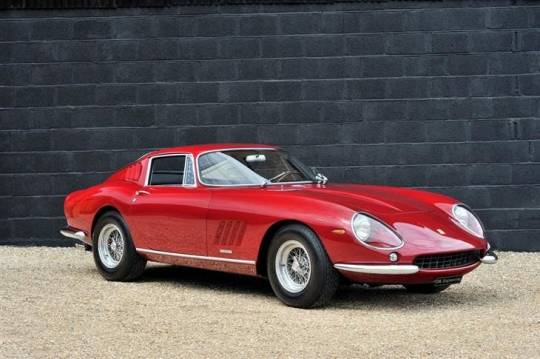
The Ferrari 275 GTB is a classic sports car produced by the Italian automaker Ferrari from 1964 to 1968. It is considered one of the most iconic and desirable models in Ferrari’s history, known for its elegant design, performance capabilities, and racing pedigree.
Here are some key features and details about the Ferrari 275 GTB:
1. Design: The 275 GTB was designed by Pininfarina, the renowned Italian design house. It featured a graceful and timeless design with smooth lines, a long bonnet, and a short rear end. The overall shape was aerodynamically efficient and visually striking.
2. Engine: The 275 GTB was powered by a 3.3-liter Colombo V12 engine. Depending on the model, it produced around 260 to 280 horsepower. The engine was mounted in the front and provided exhilarating performance.
3. Transmission: The 275 GTB came with a 5-speed manual transmission, which allowed drivers to fully engage with the car’s power and performance.
4. Performance: The performance of the 275 GTB was impressive for its time. It had a top speed of around 160 mph (260 km/h) and could accelerate from 0 to 60 mph (0 to 97 km/h) in approximately 6 seconds.
5. Racing Success: The 275 GTB had a successful racing career. It competed in various races, including the 24 Hours of Le Mans, where it achieved class victories. The 275 GTB’s racing pedigree further added to its desirability and reputation.
6. Variants: The Ferrari 275 GTB was available in different variants, including the standard GTB, the GTB/4 (also known as the 275 GTB/4), and the lightweight Competizione Speciale models. The GTB/4 was notable for being the first road-going Ferrari to feature a four-cam V12 engine.
7. Limited Production: Approximately 800 units of the 275 GTB were produced across all variants, making it a relatively exclusive and sought-after model among collectors.
If you are interested you should read about BMW i3
#ferrari#ferrari f1#forza ferrari#formula1#scuderia ferrari#motorsport#luxury cars#fast cars#cars of japan#classic cars#muscle cars#cars#car show#cars and girls
2 notes
·
View notes
Text
Birthdays 4.2
Beer Birthdays
Edward John Birk (1867)
Karl Frederick Schuster (1890)
Five Favorite Birthdays
Alec Guinness; English actor (1919)
William Holman Hunt; English artist (1827)
Penelope Keith; actor (1940)
Herbert Mills; singer, "Mills Brothers" (1912)
Jack Webb; actor, director (1920)
Famous Birthdays
Hans Christian Andersen; Danish writer (1805)
Frederic Auguste Bartholdi; sculptor, "Statue of Liberty" (1834)
Nicholas Butler; educator (1862)
Giacomo Casanova; Italian writer (1725)
Charlemagne; Carolingian king of the Franks (@742 C.E.)
Walter Chrysler; automaker (1875)
Larry Coryell; jazz guitarist (1943)
Dr. Demento; radio show host (1941)
Buddy Ebsen; actor, dancer (1908)
Max Ernst; artist (1891)
Michael Fassbender; actor (1977)
George MacDonald Fraser; writer (1925)
Serge Gainsbourg; French singer (1928)
Marvin Gaye; pop singer (1939)
Brian Glover; actor (1934)
Francesco Grimaldi; mathematician, physicist (1618)
Emmylou Harris; country singer (1947)
Linda Hunt; actor (1945)
Rodney King; L.A. Police beating victim (1965)
Camille Paglia; writer (1947)
Pamela Reed; actor (1949)
Bill Romanowski; Denver Broncos LB (1966)
Leon Russell; pop singer (1942)
Debralee Scott; actor (1953)
Don Sutton; Los Angeles Dodgers P (1945)
Keren Woodward; pop singer (1961)
Emile Zola; French writer (1840)
2 notes
·
View notes
Text
0 notes
Text
Switzerland has so many millionaires that one out of every 18,000 citizens has a brand-new Ferrari https://supercarblondie.com/in-switzerland-1-of-18000-citizens-own-a-new-ferrari/
The number is more like one out of 20,000 people in Switzerland and most of them are the idiots in this town they were tired of it our son needs money to do your program and you won't and Lily says it you're a bunch of sticks in the mud and you're too stupid to do the program and too afraid and you die anyways people like her want to do stuff and live while they're in trouble doesn't want to be a mental patient like you staring at the wall now Stan is one wants him in the hospital we're done with him I'm putting him on the list to terminate. Schwarzenegger is Terry c has had it with this piece of s*** he loses his body and her son has Biden saving and he's in a wicked fight with him usually and he saves him to do a job but really it's because you're not supposed to do that to each other Trump is the one who demanded it
America's not declining foreigners didn't invade but they will now and it's supposed to align people but it won't because of what this person is doing and they're going to kick him out the Mac proper don't want him doing it no they do they're kind of idiots we only need a little age we don't need a huge edge
Biden was getting foreigners out you people are the ones that started fighting each other was foreigners started doing it cuz I couldn't get in
It's talking about attempted assassination it's like why would you have it
GOD DOES NOT SAVE THIS POOR BOY HE DID NOT SAVE HIM FROM GETTING SHOT HE'S A LIAR
And his oppression is restrictive you don't save people for useless against the Mac proper at least you made excuses half decent
Oh God he's still talking
Thor Freya
Olympus
Zues Hera
0 notes
Text
In 2024, an entire group of exclusive models from iconic Italian and German carmakers will bow out, making it the end of an era for certain releases.
These decisions are part of a turning point for how some automakers are addressing the future of their brands and next phase of design.









0 notes
Link
0 notes
Photo
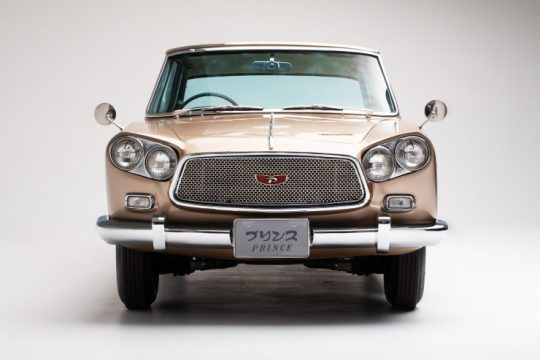
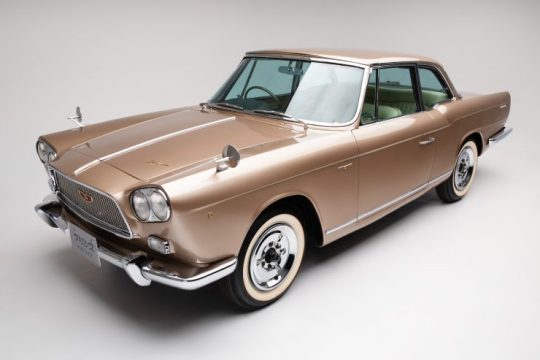
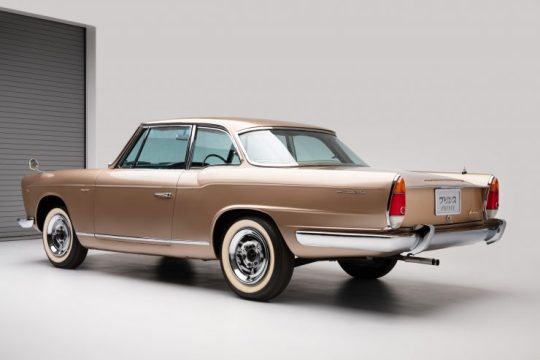




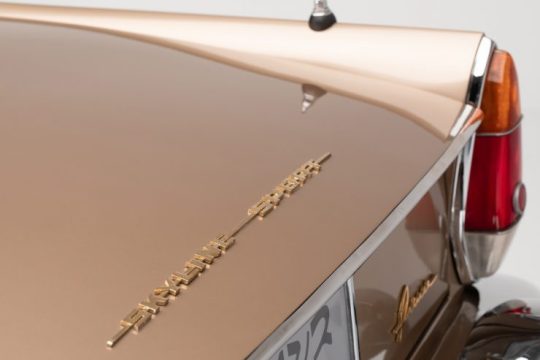
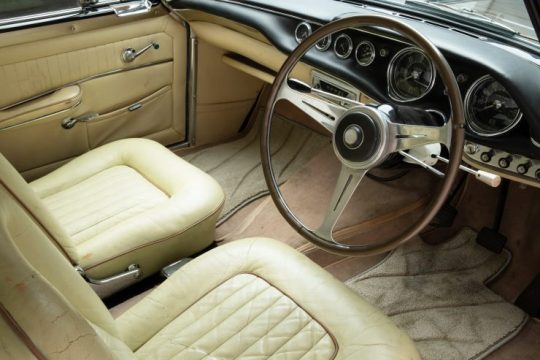

Prince Skyline Sport Coupe by Michelotti. (1 of 60).
The Prince Skyline was a car with humble beginnings that would slowly evolve into one of the most famous Japanese sports cars in the world – the Nissan Skyline and the almost universally loved Nissan GT-R.
The Skyline model range started in 1957 as a modest four-door sedan with a 1,482cc 4-cylinder engine producing 60 hp, and capable of a top speed of 87 mph. Nissan and Prince would merge in the 1960s, the Skyline was one of the Prince cars that survived – eventually becoming a major member of the Nissan stable.
One of the most famous early Skylines is the car you see here, the Skyline Sport Coupe by Michelotti. It was the work of Italian designer Giovanni Michelotti who was hired to pen the eye-catching bodywork, using the Prince Gloria as the base platform. The Gloria was the slightly larger sibling to the Skyline, with a 1.9 litre engine that offered a little more power, and a slightly larger overall footprint allowing more room inside the cabin. Michelotti used this larger platform to his advantage, creating both a luxurious coupe and a convertible, with ample interior space, canted headlights, and remarkably good visibility from inside the car thanks to the narrow pillars. The unusual headlights weren’t actually that unusual at the time, they’d been used by cars built by automakers like Chrysler, Bentley, and Ferrari. Michelotti would go on to use a somewhat similar headlights design again on the Triumph Vitesse in 1962.The early 1960s were a time of rapid change in the automotive world, with many car makers competing to create and establish new design language for the new decade. It was a forward-thinking move by Prince to hire Michelotti at the beginning of the decade to design them a new body, at the same time giving the brand the significant image boost that comes with the hiring of a well-known Italian designer.
Under the hood, the Prince Skyline Sport Coupe used the same 91 hp 1.9 litre engine as the Gloria, so performance was sedate rather than aggressive. The transmission is a 4-speed manual column-shift, and power is sent back to a live axle rear end. Over the course of the model’s very limited production run, only approximately 60 examples of Michelotti’s Skyline were built. Despite their relative rarity, they were a common sight in Toho films of the early 1960s – largely because Prince had a very proactive (and very successful) PR team who were adept at getting their cars used in films.
#Prince Skyline Sport Coupe#Nissan Skyline#Nissan GT-R#Giovanni Michelotti#Prince Gloria#chrysler#Bentley#Ferrari#Triumph Vitesse
101 notes
·
View notes